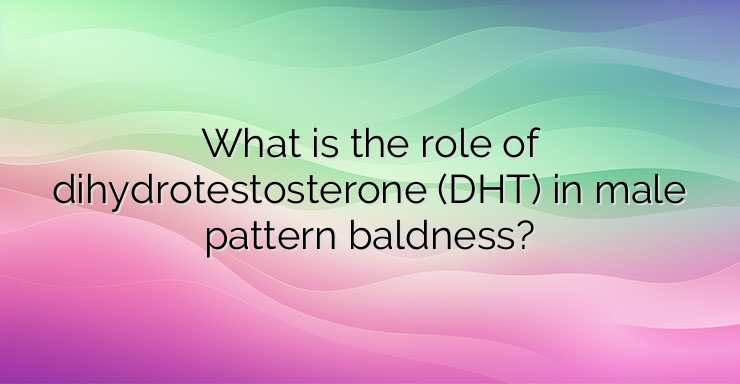What is dihydrotestosterone? Male pattern baldness, also called androgenetic alopecia, is one of the most common reasons men lose hair as they age. Women can also experience this type of hair loss, but it is much less common. Sex hormones in the body are believed to be the most significant underlying factor behind male pattern baldness. Dihydrotestosterone (DHT) is an androgen – a sex hormone that contributes to the development of male sex characteristics such as body hair. But it can also cause hair to fall out faster and earlier in life. There are treatments designed to delay the onset of androgenetic alopecia by specifically targeting DHT. What does dihydrotestosterone do? Dihydrotestosterone (DHT) is derived from testosterone. Testosterone is a hormone that is present in both men and women. Testosterone and DHT are androgens or hormones that contribute to male sex characteristics when going through puberty. These traits include: A deep voice; Increased body hair and muscle mass; Growth of the penis, scrotum and testicles when seminal fluid production begins; Changes in the way fat is stored in the body As we age, testosterone and dihydrotestosterone (DHT) have many other benefits for the body, such as maintaining overall muscle mass and promoting sexual health and fertility. Men generally have more testosterone in their bodies. About 10 percent of testosterone in all adults is converted to DHT by an enzyme called 5-alpha reductase (5-AR). Once freely distributed through the bloodstream, DHT can bind to hair follicle receptors in the scalp, causing them to shrink and become less able to support healthy hair. And DHT’s potential to cause harm goes beyond hair. Research has linked dihydrotestosterone, and especially abnormally high levels of it, to: Slow skin healing after injury; Enlarged prostate; Prostate cancer; Coronary heart disease. High levels of DHT can increase the risk for certain conditions, but too little DHT can also cause developmental problems when going through puberty. Low levels of dihydrotestosterone (DHT) can cause delayed onset of puberty in both sexes. However, low levels of dihydrotestosterone do not seem to have much effect on women, but in men they can cause: Late or incomplete development of the penis or testicles; Changes in the distribution of body fat causing conditions such as gynecomastia; Increased risk of developing aggressive prostate tumors Why does dihydrotestosterone affect men differently? Hair loss is genetically predisposed, meaning it runs in the family. For example, if a man has male pattern baldness, it is likely that his son will also have a similar pattern of baldness with age.If a person is already at increased risk for androgenetic alopecia, the follicle-shrinking effect of dihydrotestosterone is usually more pronounced. Head size and shape can also contribute to how quickly dihydrotestosterone shrinks hair follicles. References: 1. Adil A, et al. (2017). The effectiveness of treatments for androgenetic alopecia: A systematic review and meta-analysis 2. Hagenaars SP, et al. (2017). Genetic prediction of male pattern baldness 3. Healthline. What You Need to Know About DHT and Hair Loss


Leave a Reply